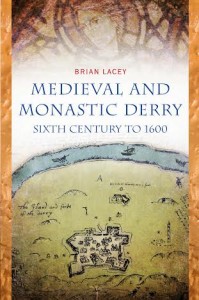A new book being launched this week will for the first time detail Derry’s wealth of medieval history.
“Medieval and Monastic Derry: Sixth century to 1600,” by Brian Lacey, offers the first comprehensive study of the city during that period in time.
Commissioned as a contribution to Derry’s City of Culture celebrations and funded in part by the Holywell Trust through its City Walls Heritage Project, an educational initiative encouraging people to engage with the city’s historic walls, the publication will be launched by the author at the Tower Museum this Thursday.
Brian Lacey, author, lecturer, excavator, researcher and founder of Derry City Council’s Museum and Heritage Service, said his work re-examined a number of previous studies in order to strengthen and reinforce current historical interpretations.
He said: ““The turbulent history of the city has been well documented, complete with legends, theories and battles.
“The book re-examines the turbulent periods in history of the city from its origination as a monastery founded, according to legend, by St Columba, to the capture in the late sixth century by Cenél Conail through to the twelfth century.
“The book focuses on the harnessing of the Columban legend especially under the reign of the Mac Lochlainn kings in the 1100s when the city became an influential and significant political and cultural hub as well as a major pilgrimage destination.
“The defeat of the Mac Lochlainn kings brought about a corresponding decline in the city’s life.”
Brian said 1600 was “very significant” in the city’s history as it saw the end of its Gaelic identity, with the arrival of the English.
He added: “In this book I have emphasized the changing fortunes of Derry by examining the contexts of contemporary secular politics throughout medieval times.”
Mayor of Derry Cllr Martin Reilly said the book was an “important’ publication.
He said: “In a year that we have celebrated the UK City of Culture as well as the 400th anniversary of our ancient monument, the historic Walls, this book is a welcomed insight for locals, historians, visitors and anyone who wants to delve into our rich cultural heritage and the St. Columba legend dating back as far the 6th century.”
Tags:






